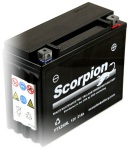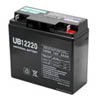How Batteries Work | An Introduction to Batteries
You ever have a project or an idea that you know will be great, but just can’t seem to get your act together enough to get it off the ground? C’mon, admit it, you know what I am talking about. The new deck in the backyard, the addition on the house, the gizmo that you have tucked away in your brain that is surely to be the greatest invention since disposable toilet paper?
You see, I know that you know that I know you know what I am…oh wait, err, never mind. What I am trying to say is I am a bit behind on getting the ball rolling on our BatteryStuff.com blog. So here is what I propose: From here on out, I will keep you all up to date on the latest news that all that is to do with BatteryStuff.com, and all you have to do is read. See there, I am doing all the work, and you just need to become informed and mildly entertained. I expect to dabble in the world of motorcycles, RV’s and boats, Lead acid, snakes, birds, kids. Basically, whatever strikes my fancy on the day our Social media marketing guys tell me we need an update. I will do my best to keep it light reading and entertaining. Further, I will include entertaining and sometimes informative links to keep your brain twirling, and maybe kill some time in the office.
We just had our first frost this morning, which brings to mind the need to start thinking about end of season battery maintenance. Sure, your battery may be ‘maintenance free’, but we all know nothing is really free, now don’t we? But what else do we know about batteries? Read on to find out, or bail out now, cause this is gonna be a real page burner (credit to Stu Altman for this informative piece)
 A 12-volt battery is made up of a plastic case containing six cells. Each cell is made up of a set of positive and negative plates immersed in a dilute sulfuric acid solution known as electrolyte, and each cell has a voltage of around 2.1 volts when fully charged. The six cells are connected together to produce a fully charged battery of about 12.6 volts.
A 12-volt battery is made up of a plastic case containing six cells. Each cell is made up of a set of positive and negative plates immersed in a dilute sulfuric acid solution known as electrolyte, and each cell has a voltage of around 2.1 volts when fully charged. The six cells are connected together to produce a fully charged battery of about 12.6 volts.
That's great, but how does sticking lead plates into sulfuric acid produce electricity? A battery uses an electrochemical reaction to convert chemical energy into electrical energy. Let's have a look. Each cell contains plates resembling tiny square tennis racquets made either of lead antimony or lead calcium. A paste of what's referred to as "active material" is then bonded to the plates; sponge lead for the negative plates, and lead dioxide for the positive. This active material is where the chemical reaction with the sulfuric acid takes place when an electrical load is placed across the battery terminals.
How It Works
Let me give you the big picture first for those who aren't very detail oriented. Basically, when a battery is being discharged, the sulfuric acid in the electrolyte is being depleted so that the electrolyte more closely resembles water. At the same time, sulfate from the acid is coating the plates and reducing the surface area over which the chemical reaction can take place. Charging reverses the process, driving the sulfate back into the acid. That's it in a nutshell, but read on for a better understanding. If you've already run from the room screaming and pulling your hair, don't worry.
The electrolyte (sulfuric acid and water) contains charged ions of sulfate and hydrogen. The sulfate ions are negatively charged, and the hydrogen ions have a positive charge. Here's what happens when you turn on a load (headlight, starter, etc). The sulfate ions move to the negative plates and give up their negative charge. The remaining sulfate combines with the active material on the plates to form lead sulfate. This reduces the strength of the electrolyte, and the sulfate on the plates acts as an electrical insulator. The excess electrons flow out the negative side of the battery, through the electrical device, and back to the positive side of the battery. At the positive battery terminal, the electrons rush back in and are accepted by the positive plates. The oxygen in the active material (lead dioxide) reacts with the hydrogen ions to form water, and the lead reacts with the sulfuric acid to form lead sulfate.
The ions moving around in the electrolyte are what create the current flow, but as the cell becomes discharged, the number of ions in the electrolyte decreases and the area of active material available to accept them also decreases because it's becoming coated with sulfate. Remember, the chemical reaction takes place in the pores on the active material that's bonded to the plates.
Many of you may have noticed that a battery used to crank a bike that just won't start will quickly reach the point that it won't even turn the engine over. However, if that battery is left to rest for a while, it seems to come back to life. On the other hand, if you leave the switch in the "park" position overnight (only a couple of small lamps are lit), the battery will be totally useless in the morning, and no amount of rest will cause it to recover. Why is this? Since the current is produced by the chemical reaction at the surface of the plates, a heavy current flow will quickly reduce the electrolyte on the surface of the plates to water. The voltage and current will be reduced to a level insufficient to operate the starter. It takes time for more acid to diffuse through the electrolyte and get to the plates' surface. A short rest period accomplishes this. The acid isn't depleted as quickly when the current flow is small (like to power a tail light bulb), and the diffusion rate is sufficient to maintain the voltage and current. That's good, but when the voltage does eventually drop off, there's no more acid hiding in the outer reaches of the cell to migrate over to the plates. The electrolyte is mostly water, and the plates are covered with an insulating layer of lead sulfate. Charging is now required.
Self Discharge
One not-so-nice feature of lead acid batteries is that they discharge all by themselves even if not used. A general rule of thumb is a one percent per day rate of self-discharge. This rate increases at high temperatures and decreases at cold temperatures. Don't forget that your Gold Wing, with a clock, stereo, and CB radio, is never completely turned off. Each of those devices has a "keep alive memory" to preserve your radio pre-sets and time, and those memories draw about 20 milliamps, or .020 amps. This will suck about one half amp hour from your battery daily at 80 degrees Fahrenheit. This draw, combined with the self-discharge rate, will have your battery 50 percent discharged in two weeks if the bike is left unattended and unridden.
When A Battery Is Being Charged
Charging is a process that reverses the electrochemical reaction. It converts the electrical energy of the charger into chemical energy. Remember, a battery does not store electricity; it stores the chemical energy necessary to produce electricity.
A battery charger reverses the current flow, providing that the charger has a greater voltage than the battery. The charger creates an excess of electrons at the negative plates, and the positive hydrogen ions are attracted to them. The hydrogen reacts with the lead sulfate to form sulfuric acid and lead, and when most of the sulfate is gone, hydrogen rises from the negative plates. The oxygen in the water reacts with the lead sulfate on the positive plates to turn them once again into lead dioxide, and oxygen bubbles rise from the positive plates when the reaction is almost complete.
Many people think that a battery's internal resistance is high when the battery is fully charged, and this is not the case. If you think about it, you'll remember that the lead sulfate acts as an insulator. The more sulfate on the plates, the higher the battery's internal resistance. The higher resistance of a discharged battery allows it to accept a higher rate of charge without gassing or overheating than when the battery is near full charge. Near full charge, there isn't much sulfate left to sustain the reverse chemical reaction. The level of charge current that can be applied without overheating the battery or breaking down the electrolyte into hydrogen and oxygen is known as the battery's "natural absorption rate." When charge current is in excess of this natural absorption rate, overcharging occurs. The battery may overheat, and the electrolyte will bubble. Actually, some of the charging current is wasted as heat even at correct charging levels, and this inefficiency creates the need to put more amp hours back into a battery than were taken out. More on that later.
How Long Will My Battery Last?
There are many things that can cause a battery to fail or drastically shorten its life. One of those things is allowing a battery to remain in a partially discharged state. We talked about sulfate forming on the surface of the battery's plates during discharge, and the sulfate also forms as a result of self-discharge. Sulfate also forms quickly if the electrolyte level is allowed to drop to the point that the plates are exposed. If this sulfate is allowed to remain on the plates, the crystals will grow larger and harden till they become impossible to remove through charging. Therefore, the amount of available surface area for the chemical reaction will be permanently reduced. This condition is known as "sulfation," and it permanently reduces the battery's capacity. A 20 amp hour battery may start performing like a 16 amp hour (or smaller) battery, losing voltage rapidly under load and failing to maintain sufficient voltage during cranking to operate the bike's ignition system. This last condition is evident when the engine refuses to fire until you remove your finger from the start button. When you release the starter, the battery voltage instantly jumps back up to a sufficient level. Since the engine is still turning briefly, the now energized ignition will fire the spark plugs. In the next installment, we'll see exactly why increased internal resistance due to sulfation causes less power to be delivered to the starter.
Deep discharging is another battery killer. Each time the battery is deeply discharged, some of the active material drops off of the plates and falls to the bottom of the battery case. Naturally, this leaves less of the stuff to conduct the chemical reaction. If enough of this material accumulates in the bottom of the case, it'll short the plates together and kill the battery.
Overcharging is an insidious killer; its effects often aren't apparent to the innocent purchaser of the ten-dollar trickle charger who leaves it hooked to the battery for extended periods. A trickle charger charges at a constant rate regardless of the battery state of charge. If that rate is more than the battery's natural absorption rate at full charge, the electrolyte will begin to break down and boil away. Many a rider has stored a bike all winter on a trickle charger only to find the battery virtually empty in the spring. Also, since charging tends to oxidize the positive plates, continued overcharging can corrode the plates or connectors till they weaken and break.
Undercharging is a condition that exists on many motorcycles. Your voltage regulator is set to maintain your system voltage at around 14 to 14.4 volts. If you're one of those folks who rides the interstate highways with your voltmeter showing only 13.5 volts because you're burning more lights than Macy's Christmas display, you should be aware that that voltage is sufficient to maintain a charged battery but insufficient to fully recharge a depleted one. Remember, we said that gassing occurs when all or most of the lead sulfate has been converted back to lead and lead dioxide. The voltage at which this normally occurs, known as the gassing voltage, is normally just above 14 volts. If your system voltage never gets that high, and if you don't ever compensate by hooking up to a charger at home, the sulfate will begin to accumulate and harden just as plaque does in your mouth. Consider a thorough occasional charging to be like a good job of flossing and brushing your teeth. If you practice poor dental hygiene, you can go to the dentist, and have him blast and scrape at the yucky stuff. When your battery reaches that stage, it's curtains!
What Type Of Charger, And Why
Your alternator and a standard automotive taper charger have a lot in common; they seek to maintain a constant voltage. Here's the problem with trying to quickly charge a deeply discharged battery with either one. Remember, we discussed how a heavy current draw would make a battery appear dead. Then, as the acid diffused through the cells, the concentration at the plates' surface would increase and cause the battery to spring back to life.
In similar fashion, the voltage of a battery during charge increases due to the acid concentration that occurs at the plates' surface. If the charge rate is significant, the voltage will rise rapidly. The taper charger or vehicle voltage regulator will taper the charge rate drastically as the voltage rises above 13.5, but is the battery state of charge commensurate with the voltage? No! Once again, it takes time for the acid to diffuse throughout the cells. Although the voltage may be high, the electrolyte in the outer reaches of the cells is still weak, and the battery may be at a much lower state of charge than the voltage would indicate. Only after charging for an extended period at the reduced current will the full capacity be reached. This is the reason you must not judge a battery's state of charge by measuring voltage while charging. Test it only after allowing the battery to sit for at least an hour. The voltage will reduce and stabilize as the acid diffuses throughout the cells.
Within the past several years, several companies have developed chargers that can charge a depleted battery quickly, and then hold the battery at a voltage that will neither cause it to gas nor allow it to self-discharge. These are sometimes referred to as "smart chargers" or multi-stage chargers. Here's how they work.
We said that a battery could accept a much higher rate of charge when it's partially depleted than when it's near full charge. These multi-stage chargers take advantage of that fact by beginning the charge in a constant current, or "bulk charge" mode. Typically, they provide a charge rate of between 650 milliamps and 1.5 amps, depending on make and model. This bulk charge is held constant (or should be) till the battery voltage reaches 13.5 volts, thus allowing the battery to absorb a larger amount of charge in a short time and without damage. The charger then switches to a constant voltage or "absorption" charge. The idea here is to allow the battery to absorb the final 15 percent of its charge at its natural absorption rate to prevent undue gassing or heating. Finally, these chargers switch to a "float" mode in which the battery voltage is held at a level sufficient to keep it from discharging but insufficient to cause overcharging. The various companies disagree generally on what this float voltage should be, but it's usually between 13.2 and 13.4 volts. Actually, the float voltage should be temperature compensated between 13.1 volts at 90 degrees Fahrenheit to 13.9 volts at 50 degrees. Most of the very expensive high power multi-stage chargers for use on larger RV batteries are temperature compensated, but none of the motorcycle units are to my knowledge; they use a compromise float setting.
So, I can just set it and forget it, right? Well, not exactly. For one thing, you need to monitor the battery occasionally for correct fluid level (unless you own a sealed battery). Another problem is that of exercising the battery. Even if held at 13 volts, the unwavering voltage will allow the battery to eventually begin to sulfate. With most of these units, I recommend that you unplug the charger at least once every 60 days during seasonal storage. Allow the battery to rest for a couple of days, and then plug the charger in again.
Still Here?
If you're still reading this, you're a real trooper. I realize that the subject can be confusing or even boring, but take heart; I went easy on you. There's far more left untold than what appears here. This was "Battery's Greatest Hits." I hope that it was enough to get you interested without sending you into information overload, and, maybe, now that you know how many ways there are to shorten a battery's life, you know why no one can predict how long a battery will last. A lot of riders who believe they take excellent care of their batteries are actually killing them with kindness.



